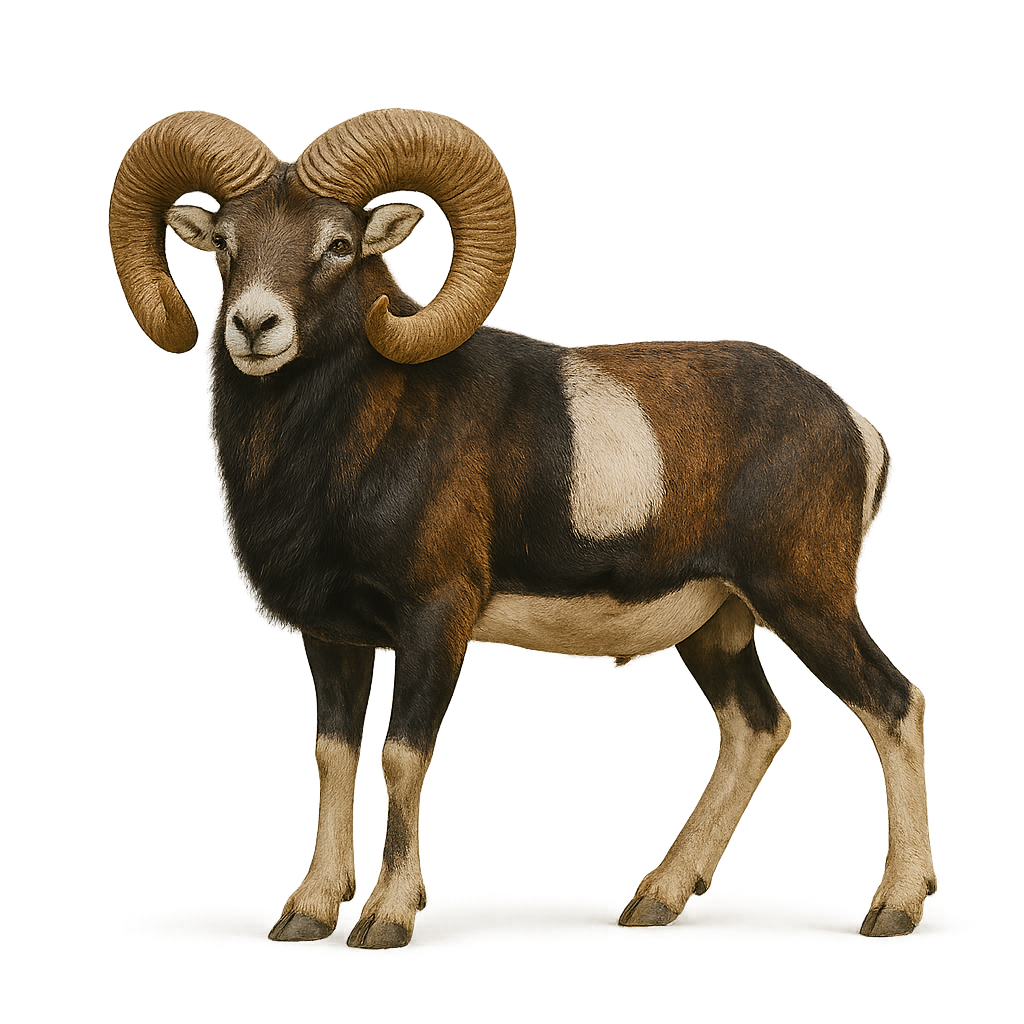Observe and photograph a species in its natural habitat
Learn where and when to observe a species in the wild, how to recognize it in the field, and what habitats it lives in. Get photography tips adapted to its behavior and capture stunning images without disturbing the animal. For full details, open the complete profile in the WildlifePhotographer app.
Anatolian Sheep
Scientific name: Ovis gmelini

IUCN Status: Least Concern
Family: BOVIDAE
Group: Mammals
Shyness: Suspicious
Safe distance: 50 m
Breeding season / Courtship: 01.11-31.12
Gestation: 150 à 160 jours
Births: 01.04-31.05
Habitat:
Mountains, rocky and grassy areas
Description:
The Mouflon is a small wild sheep found primarily in the mountains of Europe, the Middle East, and Central Asia. It measures between 70 and 80 cm in height at the withers and weighs between 40 and 80 kg, with males generally being larger and more imposing than females. What distinguishes the Mouflon is the presence of large, curved horns in males, while females have smaller and less pronounced horns. Their coat is generally reddish-brown in the summer, with a white belly and a darker mane along the back, which becomes thicker and fuller in the winter. The Mouflon primarily inhabits mountainous areas, forests, and meadows, where it feeds on grasses, leaves, shrubs, and roots. It is an excellent climber and moves easily across rocky and steep terrain. While its population remains stable, the Mouflon may be threatened by habitat loss, hunting, and competition with domesticated livestock.
Recommended lens:
>=300 mm
Photography tips:
Approach slowly and discreetly, using a telephoto lens to capture images from a distance, as the Caucasian sheep is a rather alert animal and can easily move away if disturbed.
Photograph early in the morning or late in the afternoon, when the light is soft and the Caucasian sheep is more active, often moving or feeding in the mountains or wooded areas.
Capture moments of natural behavior: The Caucasian sheep is often observed in small groups. Wait for moments when it moves across rugged terrain or rests in vegetated areas.
Be patient and respectful: The Caucasian sheep is a rather discreet animal, so wait for moments when it is more visible without disturbing its natural activity.
The Caucasian sheep is a vulnerable species due to habitat loss and poaching. It is essential to respect its natural environment and not disturb its feeding or social behaviors. Follow local conservation rules to preserve this species and its habitat.
Ready to take action?
Choose your platform and start your free trial today



